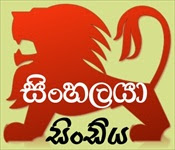Horses and Elephants | All the animals you meet at work
Horses
I was an intern at one of the top software companies in Sri Lanka, which was the pioneering IT services provider for over 15 years specializing in aviation solutions, despite securing a masters degree and bachelor’s degree in information technology. Entry into the industry was that pathetic, but I took whatever the opportunity that came my way with both hands.
Who was I to complain, Mr. William Gates used to sleep on his friend’s dorms and Mr. Steve Jobs used walk so many miles to have one have that one good meal from an Indian temple.
As Mr.Jobs would relate the fonts of his Macintosh OS and the calligraphy classes he took, I would not be writing down about the horses if I had not taken up the internship. HR Manager of the firm conducted a soft skills programme for all the interns, who were 07 odd years younger than I was. The programme was about ‘the 07 habits of highly effective people’.
Somewhere, in there he related to the types of people he has to work with as the HRM and how they behave.

Stallions / Hot bloods
Stallions are untamed horses captured from the wild. (Not the conclusive scientific explanation though) They are full of energy, enthusiasm and determination with speed and endurance. It is a bit difficult to handle them.
I believe you have met this type of people at work.
- They do not play nice with others. Its not that they are bad, but it is their nature.
- They get angry upfront.
- Single-handedly performs/carries out tasks that may require 3-4 persons with less time.
- They do not walk away with incomplete tasks, no matter what.
- They need hard work physically/mentally to be normal.
- They reach the climax of their productivity during high pressure/intense situations.
- They demand respect and rewards for the work they do.
- They tend to change workplaces, simply to seek challenges and opportunities.
They are free horses; you just have to let them roam in the wild freely.
It is difficult to navigate them. However, if you put blinkers to a stallion and place it on a racecourse, no wonder they will be victorious. In the same manner, stallions at work will provide a project manager with enormous unimaginable breakthroughs. (Provided the managers will know the method of applying the blinkers on)
Mr. Arjuna Ranathunga knew how to make use of stallions like Mr. Sanath Jayasurya and Mr. Romesh Kaluwitharana. They were put into the racecourse with no responsibility of protecting their wicket and to hit the cricket ball as hard as you can.
Ponies/Cold bloods
Ponies are the average horses with no exceptional qualities other than the general qualities of a horse. They are being used for slow heavy work. They are widely available.
I am sure most of us belong to the same category, the average typical worker/employee. They are widely available. They posses average qualities and believe that hard work will make their bread and butter. They always try to establish a good work-life balance.
They are being used to simply get the work done by the top management. They will act as the labour force who will deliver the workload. Yes, they do not posses a huge bargaining power like the stallions, but the project will not succeed without them. However, they can and are being replaced very easily. (With delays due to domain knowledge transfers and task familiarization) Often their commitments are not being appreciated and rewarded lightly.
Warm Bloods
They are a category of horses called ‘warm bloods’, typically the creatures born as a breed originated from the above two. They really should not, be discussed drastically. A stallion may grow old and become more tamed. A cold blood will gather more qualities of a stallion over a period and might show some exceptional skills with experience.
Interns ???
What type of a horse is that? I have not heard about a horse in that name, but you do meet them in corporate environments. They are being offered an opportunity and somewhat exploited. (Not really unfair to say) Most internship starts with loads of training, workshops and promises. However, a week or two later, they are slowly transformed into slaves.
Elephants
There are two types of elephants according to Sri Lankan corporate culture. The one who pull the huge timber logs and the ones seen in the processions. (Perahara) The first is typical hard work, which will exploit the animal, which will associate extreme hard work. The later is a more of fancy parade, where the elephant becomes a celebrity,sometimes may be worshiped upon by the public.
It is the elephant that will have to perform both of the above activities. You do not get processions and festivals all year long. The rest of the days have to be associated with hard work of course.
The same can be observed in the corporate culture.But, where the top-level managers go wrong is when they choose same people to do the heavy timber lifting and same people regularly attending the processions/limelight. The trick is to send the hardest worker first to the procession. Therefore, all the elephants will be motivated to do more hard work and earn the limelight.










Enjoyed it!
You were the first one to comment on my blog! Means a lot! Thanks!